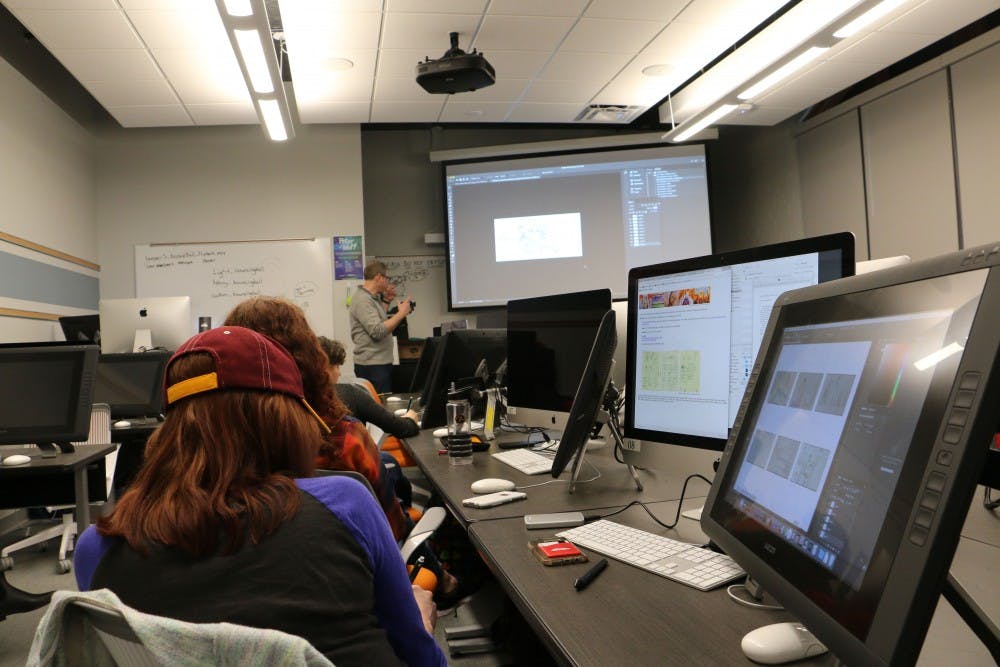Animation program to be implemented in 2020

Students prepare to watch a short clip in the new animation class in Wightman Hall, Room 224, January 11, 2018.
Beginning in Spring 2020, the College of Communication and Fine Arts will offer a major program on animation.
The university hired associate professor Steven Leeper in April to create the major. Leeper previously was a professor of animation at Huntington University for 12 years.
"We want to be major storytellers," Leeper said. "We're working with the broadcast and cinematic arts department to create post-production animation for video projects."
Central Michigan University has wanted to adopt an animation program for three years, and hired Leeper to develop the curriculum.
The art department has approved the academic plan for the program. It is currently in the review process, being looked at by the Academic Senate and the administration, said art department chair Jonathan Russell.
Currently, there are only three animation courses offered at CMU: Art 397O, Art 397I and Art 397N — Beginning Animation, Digital Animation and Storyboarding Animation, respectively. Digital and storyboarding are new classes that are meant to assist in the coming program.
Students in the multimedia design program can take the beginning animation class to count toward the minor.
Leeper said students who are interested can start taking classes that will count toward the major. Starting in 2019, the department will advertise the program to prospective students.
Some classes offered in the course will take place in a computer graphics lab that was built on the second floor of Wightman Hall during Summer 2017.
Leeper worked with architects and technicians to make an optimal animation lab. The lab contains Mac computers with graphics tablets that students can draw on with stylus pens.
Leeper said roughly 20 students have shown interest in the major. Ben Greer, a sophomore from Mason, is looking to get into the new program, as he sees it as a way to help him become a storyboard or concept artist.
“I always wanted to draw,” Greer said. “Animation is the best way to research, explore and express creative freedom. I want to draw until I can find something I can narrow in on."
Some forms of animation that Leeper wants to cover in future classes include 2D, 3D, stop-motion, video effects and computer graphics. He also said he wants classes that cover specific aspects of animation, which may happen after two years of the program’s establishment.
Animator Chad Bierdeman from Copernicus Studio in Nova Scotia will also take part in the course to teach future 2D Digital Animation and Digital Foundations classes, Leeper said.
The classes will cover the use of programs such as Adobe Illustrator and Adobe After Effects, as well as basic analog forms of animation such as flipbook and basic movement. One example Leeper shows his students is how the motion of a bouncing ball relates to its shape.
“If it moves, it’s animation,” Leeper said.



